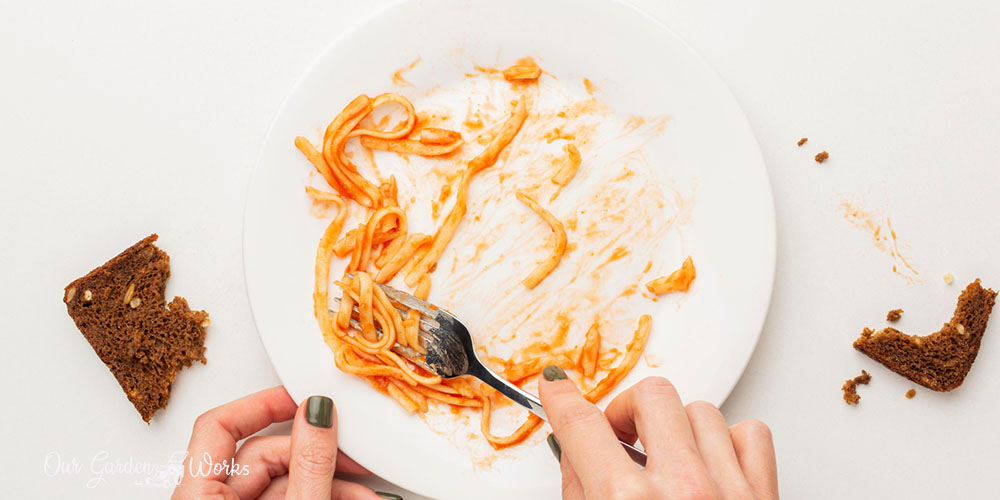Most people say that anything you eat is compostable. For most, yes but not all. Some food and substances are not an ideal addition to a compost bin. You are probably thinking, how about leftovers like spaghetti and carbonaras? can you compost pasta?
Well, the answer to that is more than a simple yes or no!.
Pasta and rice are carb-heavy foods that decompose like other edible foods. Read on to know the things that you should check when composting pasta, the layering process, and why there’s even a need for a precaution.
Q: Can You Compost Pasta?
It is safe to compost pasta, whether it is cooked or uncooked but keep it at a minimum. Too much pasta in the compost bin can breed pest infestation and bacterial overgrowth.
The pasta should be layered into the compost properly to ensure that there is a balance in the moisture level in the bin and a variety of nutrient sources. Pasta belongs to the green materials in compost but it is dry enough to absorb moisture.
Proper composting involves a balanced amount of brown and green materials. The ideal ratio is 3:1 for brown and green materials, respectively. Brown materials are the dry, woody, moisture-absorbing component of compost. They include:
- Paper
- Wood
- Sawdust
- Fall leaves
- Pine needles
- Cotton
- Cardboard or egg cartons
- Wood ash
- Toilet paper rolls
- Dried grass
- Aged hay
Green materials in the compost are wet or moist materials. They typically include leaves but also involve food scraps and other materials like:
- Untreated grass clippings
- Coffee grounds
- Tea bags
- Vegetable peels and fruit scraps (no lemons or acidic fruits)
- Trimmings from plants
- Weeds (not yet seeding)
- Eggshells
- Aged animal manures (herbivores: cow, horse, sheep, chicken, rabbit)
- Seaweeds
- Food leftovers
- Human and animal hair
- Dried flower bouquets
The Hold-Up: What Are The Risks of Composting Cooked Pasta
Pest infestation is downright annoying and causes extensive damage to property. So, homeowners should take proper composting seriously to avoid having pest problems. Composting pasta is often done by gardeners through three forms:
Cooked Pasta

Cooked pasta is a good addition to your compost bin but it can attract rodents, flies, and maggots into your property if the bin has no lid or cover. If there is more cooked pasta added in the bin over brown materials, the pests might overrun your compost. They can leave unwanted bacteria in your compost and harm your plants in the longer run.
Cooked pasta without sauce must be placed under a pile of carbon-rich materials like leaves to hide the smell and keep pests at bay. It also pays to crush them into smaller bits to help the beneficial bacteria and microorganisms to break them down faster.
Uncooked Pasta
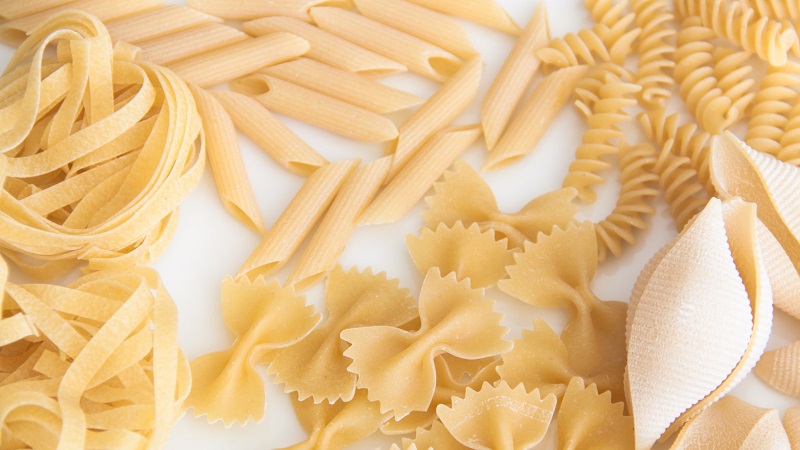
Uncooked pasta is the best version of pasta that you can add to a compost bin. It is unappealing to pests and does not smell. The only problem is it takes a lot to break down.
If you plan to add uncooked pasta, make sure to break it down using a food processor before adding it to a compost pit.
Pasta With Sauces
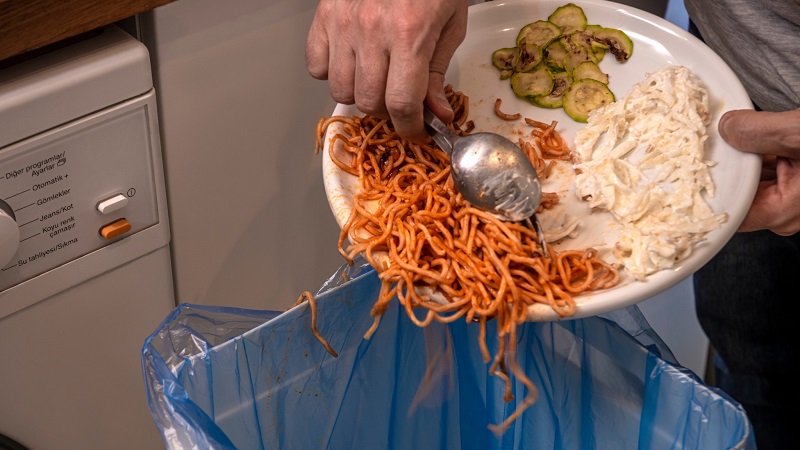
Pasta with sauces is safe to add to a compost bin as long as the sauces are minimal and not oily. Tomato sauce is acidic and can affect the pH level of the compost.
In case, there’s too much sauce, you can add wood ash to help neutralize the acidity.
If you are adding leftover spaghetti to the compost, it’s best to crush the pasta into smaller pieces and dilute the sauce with a bit of water. However, it’s much better to not add sauces into the bin altogether to avoid pest problems.
Can You Compost Moldy Pasta?
It is safe to add moldy pasta into the compost bin. Molds are a different type of bacteria similar to the microbes in the bin.
The fact that they are moldy is a testament that the decomposition process has begun and the microbes in the compost are set to continue the process in the bin.
How To Layer Your Compost When Adding Pasta?
The proper way to establish the balanced brown-green ratio of the compost is to place them in an alternate pattern. Learn how to build your compost through the directions below:
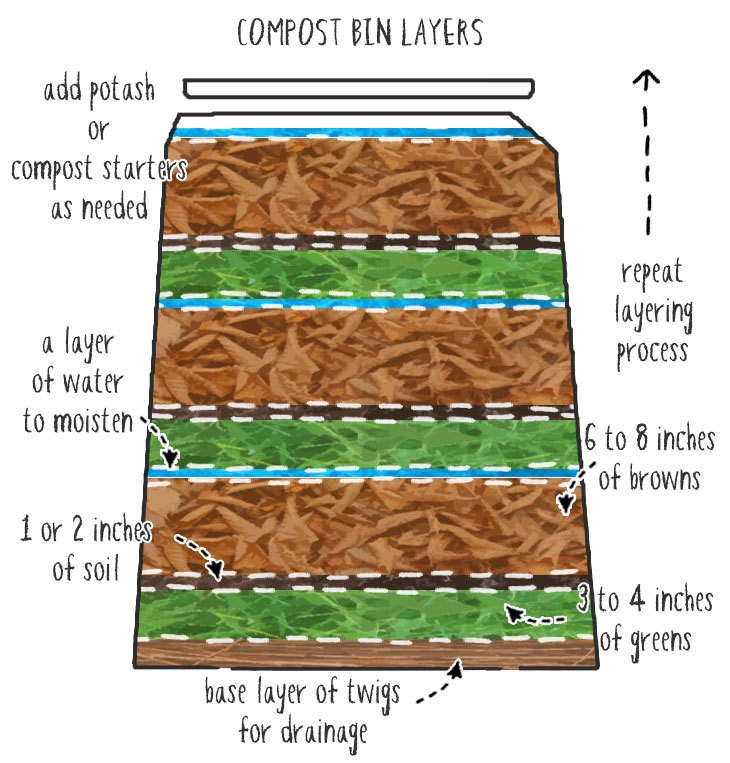
Directions:
- The first layer of the compost should be twigs, branches, and other coarse brown materials for aeration.
- The next layer is greens like grass clippings, fresh leaves, and trippings.
- Then, place 2 inches of soil or compost starter to bring in the a.k.a workers or beneficial microbes in the bin.
- Add dried leaves and flowers over the soil and pour a few inches of water to add moisture and the microbes working.
- On top of the leaves place the pasta and other materials that may attract pests.
- Cover the scraps with a blanket of soil and as well as another layer of brown materials like paper, cardboard, and egg carton boxes.
- Pour in some water then add another layer of greens or fruit peels and leftover fruits.
- The top layer should be 6 to 8 inches of brown materials to fully cover the smell of the pasta and kitchen scraps. Add the final touch to the compost bin by pouring a little bit of water and covering the bin.
- Toss the compost every two months to aerate the other parts. Microbes need oxygen to speed up the decomposition of organic materials.
How Long Does Pasta Take To Decompose?
A properly prepared compost takes about 3 to 4 months to break down. You’ll notice that the materials and scraps are no longer noticeable. Pasta, when shredded into pieces, takes about three months to decompose.
However, if you just toss them in the bin without cutting them or breaking them into pieces, they can take about 6 to 8 months.
The Benefits Of Adding Pasta To Compost
The amount of pasta that you decide to compost is a big help to the growing rate of food waste around the globe.
In America alone, there are 108 billion pounds of food waste every year, not to mention the amount of food thrown in the trash for being substandard.
You will notice the amount and edible and consumable food dumpster divers find every day and you’ll be shocked by its numbers!
We hope that gardeners like you will be inspired to manage the food waste problem by starting in the four corners of your home. It also helps teach your children about the value of composting and food waste reduction so they can continue to practice it as they grow older.
What we do today becomes an example to our kids and we hope that you leave a legacy in the environment through the practices you pass on to your kids or garden children.
So, how do you make the most of your leftover pasta? Let us give you some ideas!
5 Creative Recipes For Leftover Pasta
If there’s too much leftover pasta and they are still in an edible state, you can turn them into other types of dishes or treats for your pets.
Here are some of the dishes that you can try before you start hating spaghetti for having it the whole week!
Cheesy Pasta Frittata
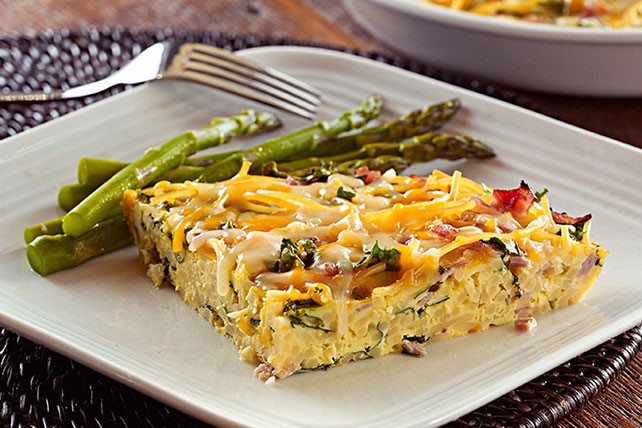
Let your left-over pasta bring something new to your typical breakfast meals. Blend it with eggs but add a little bit of twist! Here is how you can make a cheesy pasta frittata:
Ingredients:
- 6 Eggs
- 1 cup of leftover pasta, cut into shorter pieces
- 1 cup chopped spinach
- 1/2 cup ham
- 1 cup shredded cheese
Directions:
- Start the oven at 350°F.
- Prepare the scrambled eggs and add a pinch of salt and pepper and set aside.
- Spray or wipe oil on the baking tray.
- Place the cut pieces of leftover pasta and spinach in the pan. Then, pour in the scrambled eggs. You may also mix in a handful of cheese.
- Spread a nice blanket of shredded cheese over the pan and place it in the oven for 30 minutes.
Stir-Fried Noodles
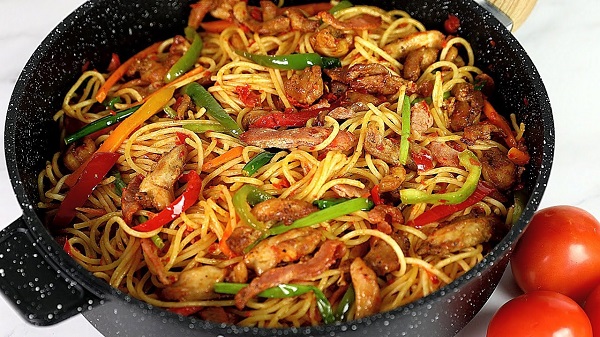
If your leftover pasta has gone dry and lumpy, restore its delicious look by making a stir-fried noodle dish. Here’s how:
Ingredients:
- 1 cup chopped bacon
- 2 cups thinly sliced boneless chicken thighs
- 1 cup thinly sliced carrots
- 1 cup thinly sliced green bell peppers
- 3 pieces of tomatoes
- Chopped spring onions
- 2 red bell peppers
- 1 tsp. Black pepper
- 1 tsp. salt
- 1 tsp. garlic powder
- 1 Bouillon cube
- 2 tsp. smoked paprika
Directions:
- In a bowl, place the chicken, salt, pepper garlic powder bouillon cube, and smoked paprika. Mix it all together until all the meat is covered with seasonings. Let it marinate for 30 minutes. Set aside.
- Place the bell peppers and tomatoes in a food processor and let them form a thick paste. Set aside.
- Heat a shallow pan and fry the bacon until crisp. Don’t turn off the heat.
- Use the oil from the bacon to fry the marinated chicken. Fry until the edges of the chicken strips become crispy.
- Remove the chicken from the pan and add the tomato and bell pepper mix. Let it simmer for about 5 minutes to remove excess moisture. Keep stirring the sauce to prevent it from burning.
- Once the paste becomes thicker, add the carrots, spring onions, and green bell pepper. Cook for three minutes. You can cook it longer if you want soft carrots.
- Add the leftover pasta and mix all the ingredients until the sauce is spread evenly.
- Lastly, add the meat. You can add more salt or pepper as desired.
Cheesy Rigatoni Pie
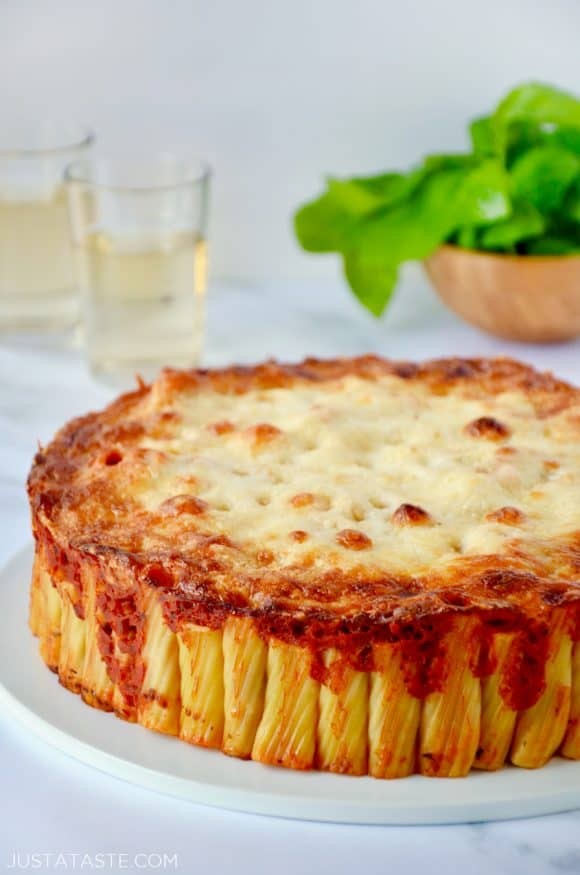
In cases when you have leftover specialty pasta like rigatoni, you certainly would love to make the most out of it. A rigatoni pie will definitely give that quality some justice. Here’s how you make your leftover rigatoni into a delectable pie:
Ingredients:
- Leftover rigatoni noodles
- 1 bottle of marinara sauce
- 1 cup of shredded mozzarella cheese
Directions:
- Start the oven at 350°F.
- Stack the rigatoni noodles in an upright position until a pot or baking pan is full.
- Spread the marinara sauce on top of the noodle and sprinkle it with mozzarella cheese.
- Place it in the oven for 10 to 15 minutes or until the cheese melts. Some people prefer the crusty edges of pies but some like mushy. So, for crusty cheese, you can leave it longer in the oven.
Pasta Pizza
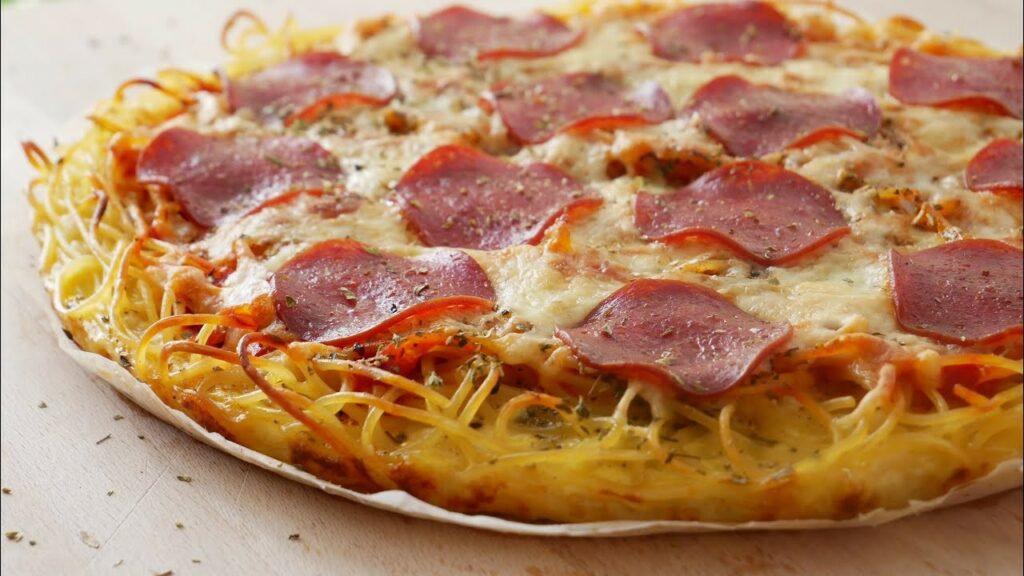
In the world of culinary, the world is our oyster. We can combine any dish as much as we want and arrive at unique and delicious dishes. One of which is pizza pasta! Here’s how to make one:
Ingredients:
- A bowl of leftover pasta
- 10 pieces Salami
- 1 cup of tomato sauce
- 2 cups shredded mozzarella cheese
- 250 ml milk
- 2 eggs
- A pinch of oregano
- A pinch of salt
- A pinch of pepper
Directions:
- Preheat the oven to 220°F.
- Place a baking sheet over the pan and place the leftover pasta. Spread the noodles evenly since they will serve as the crust of the pizza.
- Spread a thin layer of tomato sauce and sprinkle the seasonings like oregano, salt, and pepper.
- Spread a bed of cheese on top of the sauce and add the salami on top.
- Place it in the oven and cook for 20 minutes.
Pasta Croquette
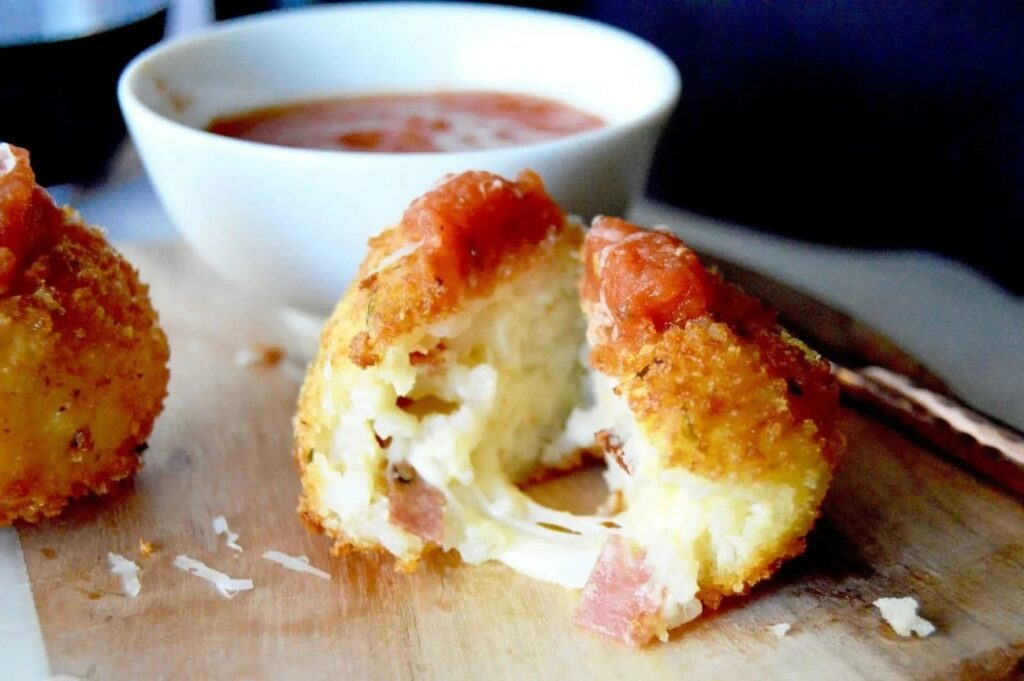
If turning your leftover pasta into another meal doesn’t sound appetizing, why not turn them into a delicious snack like croquettes or simply called pasta balls. Here’s how you can try it out:
Ingredients:
- 2 pieces of white bread
- 2 cups of cut leftover pasta
- 1 cup of cheese cubes
- 1 egg
- breadcrumbs
Directions:
- Place the bread and pasta in a food processor until the texture becomes mushy.
- With clean hands, form the small balls and put a cube of cheese in the middle. Make as many balls as you can.
- Place the egg in a small bowl and beat it to serve as an egg wash to bind the breadcrumbs to the surface of the balls. Then, spread the breadcrumbs in a separate bowl or plate.
- Set your left hand as your wet hand and the right one as your dry hand to coat the balls faster and efficiently. Using your right hand, roll the balls in the egg wash and place them on the breadcrumbs plate.
- Using your right hand, roll the croquette or balls in the breadcrumbs until the surfaces are covered.
- Fry the croquettes until golden brown. Serve with ketchup or mayonnaise as desired.
Frequently Asked Questions (FAQs)
Can rice and pasta be composted?
Rice and pasta, either cooked or uncooked, are compostable types of food. However, they are magnets of pests and can cause the development of harmful bacteria when not broken down properly. They are compostable but risky to add to the bin, especially if there’s no balanced green-brown ratio.
What foods cannot be composted?
You should avoid adding oils, dairy, and meat to a compost bin. These types of food have a complex structure and take a while to break down. They are also a magnet to rodents, maggots, and other pests. When these materials fail to break down properly, they can spread unwanted bacteria in your compost, causing potential damage to your plants.
Citrus fruits are also another food group that should not be added to a compost bin due to their harmful effects on beneficial bacteria. The beneficial microorganisms cannot stand the acidity from the lemon and other acidic foods. So adding lemon peels will do more harm than good. Better use the peels of lemon in scrubbing the surfaces of your house,
Is pasta green or brown compost?
Pasta belongs to the green compost because it is considered a wet material like leaves, teabags, and animal manure. The green layer where the pasta belongs should be placed deeper into the compost bin to mask its smell and keep pests at bay.
Can you put cooked pasta on a worm farm?
Yes, but in small proportions. Worms are not a fan of pasta and other starchy foods. They opt for food options that are easy to process such as fruit and vegetable peels.
Can you compost ramen noodles?
Ramen noodles are also made of the same materials as pasta and can still be considered compostable. However, they can attract pests into the bin, especially if the flavor of the ramen lingers on the noodles. Try to rinse or mash the noodles to make it easier for the worms and beneficial bacteria to break them down.
Final Thoughts
Composting is a simple way of contributing to our planet. We hope that this post encourages you to compost your leftovers and ensure that there’s zero food waste in your household.
As inflation and price hikes become the norm, may we all remember the value of every produce and food that we have and ensure that they will be efficiently consumed or used to the last bit.
Now, if anyone asks you if you can compost pasta, you now have extensive knowledge on how to explain it to them. Anything edible can be compostable but not all of them are ideal for the microbes in the compost.
Always remember that the compost you are building is the food of your plants that produces the food that you eat. You might not want to have anything harmful in the bin because it will surely be indirectly given to you.
